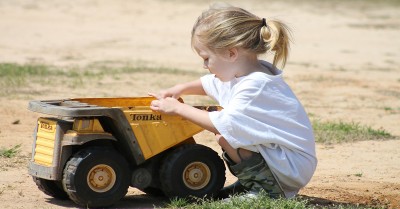Social distancing plays a key role in preventing the spread of coronavirus. This means putting space between people. When working with children, it will be difficult to maintain social distancing however there are strategies you can implement throughout the day.
Importance Of Social Distancing
Social distancing is necessary because the most likely way of catching the virus is by breathing in micro-droplets from another person sneezing, coughing, or exhaling.
Current health advice is that everyone, including people at workplaces, must implement physical distancing measures, wherever possible, of 4 square metres of space per person and maintaining a physical distance of at least 1.5 metres from others. These measures reduce the likelihood of exposure to the micro-droplets of others.
Implementing Social Distancing In Early Childhood Services
The Australian Health Protection Principal Committee (AHPPC) advises adults to undertake physical distancing when interacting with other adults, in areas such as staff rooms and when picking up or dropping off children.
As stated above, current health advice is that undertaking physical distancing involves each person having 4 square meters of space and maintaining a physical distance of at least 1.5 metres from others where possible.
This means that in order to fulfil your work health and safety duty you must, so far as is reasonably practicable, ensure all adults have 4 square metres of space each and maintain a physical distance of 1.5 metres from other adults in all areas of the facility. This includes staff facilities such as kitchens and breaks rooms and in playrooms.
Adults do not need to undertake physical distancing when interacting with or providing care to children. This means you do not need to count or include children in implementing physical distancing measures for adults.
Children do not need to undertake physical distancing. The AHPPC has advised that in early education facilities including rooms, corridors and outdoor play areas, it is not appropriate or practical to provide each child with 4 square metres of space or require them to maintain 1.5 metres from other children or from an adult who is providing care or interacting with them.
However, you may find that separating children into small groups throughout the facility and utilising both indoor and outdoor spaces during the day will make it easier for workers (and other adults) to maintain their distance from other workers and adults.
Deciding what physical distancing measures are reasonably practicable to implement in your facility will depend on all the circumstances including the safety, educational and wellbeing needs of children.
Social Distancing Measures Within The Workplace
Below are measures to ensure physical distancing is achieved for early childhood education workplaces.
Remember, you must consult with workers and their representatives (e.g. health and safety representatives (HSRs)) on health and safety matters relating to COVID-19, including what control measures to put in place in your workplace.
Drop Off and Pick Up Periods
Review your drop off and pick up procedures to determine whether you can reduce the number of workers and parents or guardians gathered at the same time.
- Depending on your facility, parents or guardians may naturally stagger their drop off and pick up times.
- If there is a set drop off and pick up time, consider whether these periods can be extended or whether you can allocate times to certain groups.
- Consider whether you will need to request parents or guardians to modify their actions once they enter the facility to either pick up or drop off their child. Request parents and guardians to maintain 1.5 metres between themselves and other adults when at the facility.
- Rearrange the foyer or waiting area where possible to encourage parents or guardians to achieve the maximum space per adult.
- Request parents or guardians to minimise time spent in the facility and not to congregate in groups.
- Put up signs and posters to remind parents or guardians about physical distancing. Consideration needs to be given to how to communicate with those for whom English is not their first language.
- Require parents or guardians who enter the facility to wash their hands with soap and water or with alcohol-based hand sanitiser and again when exiting.
Whilst it is important for parents or guardians to be able to discuss their child with workers, particularly at the end of the day, extended face-to-face communication should be minimised. Require workers, where appropriate, to use other methods of communication such as communication books, phone messages, emails or other communication apps. If a non-face-to-face option is not possible, ensure face-to-face time is conducted at an appropriate distance and is limited, that is making sure the discussion does not go on for longer than it needs to.
Worker and Children Interactions
The AHPPC has advised that in early education facilities, it is not appropriate or practical to provide children with 4 square metres of space or require them to distance themselves 1.5 metres from other children or from an adult who is providing care or interacting with them.
However as worker to worker interactions are heavily influenced by their joint care and supervision of children, you are encouraged to implement measures that maximise the distance between groups of children. This will help workers maintain their distance from each other. Consider implementing the following measures where they are reasonably practicable, understanding that these measures will depend on the developmental, care and educational needs of children:
- staggering play times
- changing frequency, or using larger spaces for group mat times (e.g. outside)
- organising small group play. You may need to redesign the layout of the room and the placement of children’s activities to encourage small group play. Consider different options to allow people to naturally spread out.
- Set up more individual activities throughout the room. For example, rather than having all of your books and blocks on one shelf, set them up in separate areas throughout the room where possible.
- Limit the number of chairs at a table to reduce the number of children that can play together - e.g. two chairs to a table.
wherever possible (e.g. weather dependent) and where you have appropriate staff numbers for adequate supervision, consider operating an indoor/outdoor program for a longer period. This provides more space for the children and the setup of more activities for children to engage in - if you are not able to run an indoor/outdoor program, consider spending more time outdoors and the placement of activities across the outdoor space. A greater range of activities may also facilitate workers being more spread out
consider the setup when children are eating – look at having fewer workers at each table and use more tables to allow space between children. Try and maximise the space between each child. This ensures that where more than one worker is required at the table to assist children to eat, workers can maintain an appropriate distance from each other - if you have limited tables and normally have all children eating at the same time, consider staggered timings of snacks and lunch over a longer period of time, and clean thoroughly between sittings, and
look at the spacing of cots and highchairs, keeping them well apart. This ensures that workers can maintain an appropriate distance from each other when attending to children. - If changing the physical layout of the workplace, your layout must allow for workers and children to enter, exit and move about the workplace both under normal working conditions and in an emergency without risks to their health and safety so far as is reasonably practicable.
Staff Only Areas
- Where possible, provide each worker with 4 square metres of space in enclosed areas in accordance with general health advice.
- To achieve this, calculate the area of the enclosed space (length multiplied by width in metres) and divide by 4. This will provide you with the maximum number of adults you should have in the space at any one time.
- Where the nature of work means you are not able to provide 4 square metres of space per adult, you need to implement other physical distancing measures to prevent the spread of COVID-19.
To help you achieve 4 square metres of space per worker (or where not reasonable, to achieve the maximum space per worker) limit the number of workers in worker areas by:
- requiring office/administrative workers to work from home where possible
- restricting access to worker areas to workers only
- displaying a sign that states the maximum number of workers allowed in an enclosed space at any one time
- reduce the number of workers utilising staff common areas at a given time – e.g. by staggering meal breaks and start times, and
- consider providing separate amenities for workers and others in the workplace – for example, separate bathroom facilities for staff and children.
Direct staff to keep 1.5 metres of distance between them in accordance with general health advice where possible. To achieve the best outcomes for physical distancing:
- implement measures in combination with measures for 4 square metres spacing, as set out above
- put signs around worker areas to identify 1.5 metres distance, and
- require staff to use other methods such as mobile phone, computer messaging systems or teleconferencing to communicate rather than face to face interaction where appropriate.
You may need to redesign the layout of worker areas and areas frequented by staff to keep at least 1.5 metres apart when performing work. This can be achieved by:
- spreading out furniture and staff desks where possible, and
- creating specific pathways for entering and exiting areas using floor or wall markings.
- If changing the physical layout of any areas, your layout must allow for staff and others to enter, exit and move about both under normal working conditions and in an emergency without risks to their health and safety so far as is reasonably practicable.
Staff Gatherings and Training
Postpone or cancel non-essential gatherings, meetings or training. If gatherings, meetings or training are essential:
- use non face-to-face options to conduct – e.g. electronic communication such as tele and videoconferencing
- if a non face-to-face option is not possible, ensure face-to-face time is limited, that is make sure the gathering, meeting or training goes for no longer than it needs to
- hold the gathering, meeting or training it in spaces that enable workers to keep at least 1.5 metres apart and with 4 square metres of space per person – e.g. outdoors or in large conference rooms
- limit the number of attendees in a gathering, meeting or training. This may require, for example, multiple training sessions to be held, and
- ensure adequate ventilation if held indoors.
Deliveries, Contractors and Visitors Attending The Workplace
- Reduce visitors to the absolute minimum, including cancelling incursions. Exclude people from entering your facilities who are at a high risk, including the elderly and those with pre-existing medical conditions.
- Other non-essential visits to the workplace should be cancelled or postponed.
- Minimise the number of workers attending to deliveries and contractors as much as possible.
- Delivery drivers and other contractors who need to attend the workplace, to provide maintenance or repair services or perform other essential activities, should be given clear instructions of your requirements while they are on site.
- Ensure handwashing facilities, or if not possible, alcohol-based hand sanitiser, is readily available for workers after physically handling deliveries.
- Direct visiting delivery drivers and contractors to remain in vehicles and use contactless methods such as mobile phones to communicate with your workers wherever possible.
- Direct visiting delivery drivers and contractors to use alcohol-based hand sanitiser before handling products being delivered.
- Use, and ask delivery drivers and contractors to use, electronic paper work where possible, to minimise physical interaction. Where possible, set up alternatives to requiring signatures. For instance, see whether a confirmation email or a photo of the loaded or unloaded goods can be accepted as proof of delivery or collection (as applicable). If a pen or other utensil is required for signature you can ask that the pen or utensil is cleaned or sanitised before use. For pens, you may wish to use your own.
On-Going Review and Monitoring
If physical distancing measures introduce new health and safety risks (e.g. because they impact communication or mean that less people are doing a task), you need to manage those risks too.
Put processes in place to regularly monitor and review the implementation of physical distancing measures to ensure they are being followed and remain effective.
Providing Personal Protective Equipment to Educators Who Are In Close Contact with Each Other or With Children
You must ensure workers comply with physical distancing requirements where possible. In circumstances where the nature of the task requires workers to be in close contact, you must put control measures in place that minimise the time workers spend with each other or with other people in the workplace. You must also ensure workers are practising good hygiene.
If you have a situation where, despite other control measures, workers will be in close contact with each other or with other people for longer than the recommended time (i.e. more than 15 minutes face to face cumulative over the course of a week or more than 2 hours in a shared closed space), consider the use of personal protective equipment (PPE).
Workers must be trained in the proper use of PPE. Be aware of WHS risks that may arise as a result of workers using and wearing PPE.
Do Educators Need to Practice Physical Distancing When on a Lunch Break or When Travelling To and From Work?
Yes. Workers must always comply with any state or territory public health directions or orders. This includes maintaining a physical distance of 1.5 metres between people.
In some states and territories, there are strict limitations on gatherings in public places. This means that in some circumstances, larger groups of workers cannot eat lunch together in a park or travel together in a vehicle to and from work.
References:
Early childhood education Physical distancing, Safe Work Australia, 21 May 2020
COVID-19: Updated Advice, Victorian Government
Note: Article Updated on 6 June 2020



 As an Educator in Australia, your pay rate falls under the Children’s Services Award 2010. This award states the minimum amount that an employer can
As an Educator in Australia, your pay rate falls under the Children’s Services Award 2010. This award states the minimum amount that an employer can When working as a qualified Early Childhood Teacher (with a university degree) within a service, your rate of pay will come from the Educational Services
When working as a qualified Early Childhood Teacher (with a university degree) within a service, your rate of pay will come from the Educational Services When working as a Diploma Qualified Educator your pay rate is from the Children's Services Award 2010. This Award states your minimum rate of pay
When working as a Diploma Qualified Educator your pay rate is from the Children's Services Award 2010. This Award states your minimum rate of pay When working as a Cert 3 Qualified Educator, your pay rate is from the Children's Services Award 2010. This Award states your minimum rate of
When working as a Cert 3 Qualified Educator, your pay rate is from the Children's Services Award 2010. This Award states your minimum rate of Educational Leaders play a crucial role in their early childhood service by ensuring that the educational program aligns with best practices and supports the holistic
Educational Leaders play a crucial role in their early childhood service by ensuring that the educational program aligns with best practices and supports the holistic In early childhood education and care, ratios are more than a technicality—they are a frontline safeguard. Every child deserves responsive supervision, emotional connection, and developmental
In early childhood education and care, ratios are more than a technicality—they are a frontline safeguard. Every child deserves responsive supervision, emotional connection, and developmental With the new national child safety reforms kicking in on 1 September 2025, early childhood services like yours have a real opportunity to lead the
With the new national child safety reforms kicking in on 1 September 2025, early childhood services like yours have a real opportunity to lead the Here’s a comprehensive Mobile Phone and Smart Watch Policy tailored for early childhood education and care (ECEC) services in Australia, aligned with the latest 2025
Here’s a comprehensive Mobile Phone and Smart Watch Policy tailored for early childhood education and care (ECEC) services in Australia, aligned with the latest 2025 The Sea of Fish Challenge is a national initiative that invites children, educators, families, and communities to create and display fish artworks as a symbol
The Sea of Fish Challenge is a national initiative that invites children, educators, families, and communities to create and display fish artworks as a symbol Across the early childhood education and care sector, educators are sounding the alarm: current staffing ratios are insufficient to deliver safe, meaningful, and developmentally appropriate
Across the early childhood education and care sector, educators are sounding the alarm: current staffing ratios are insufficient to deliver safe, meaningful, and developmentally appropriate


